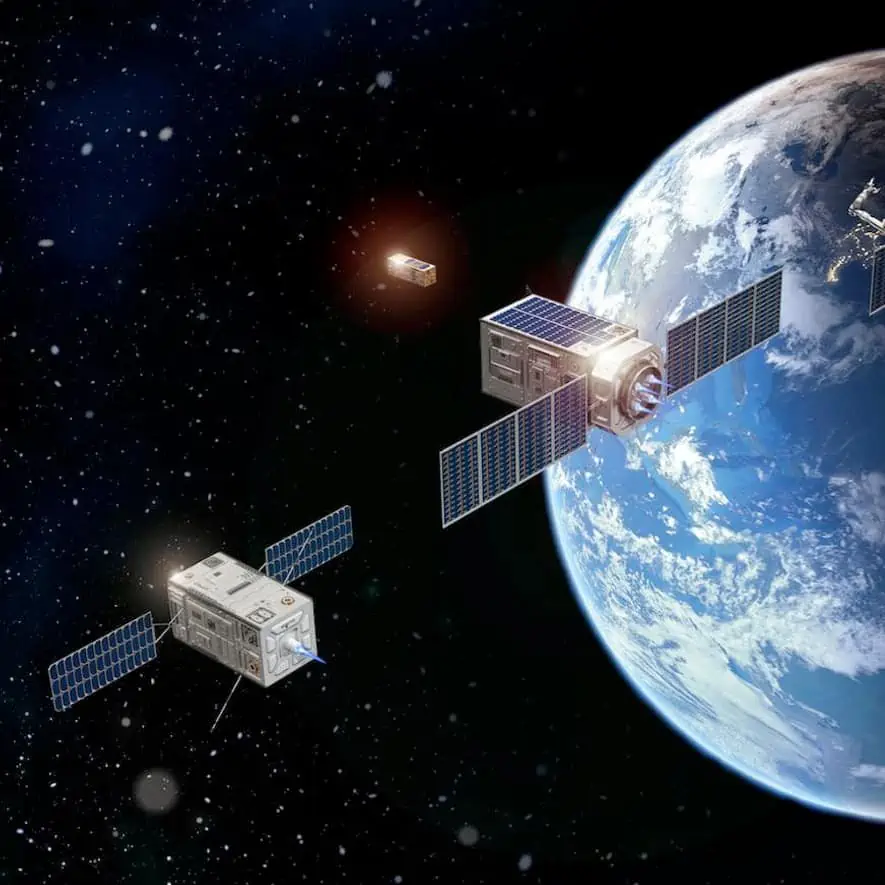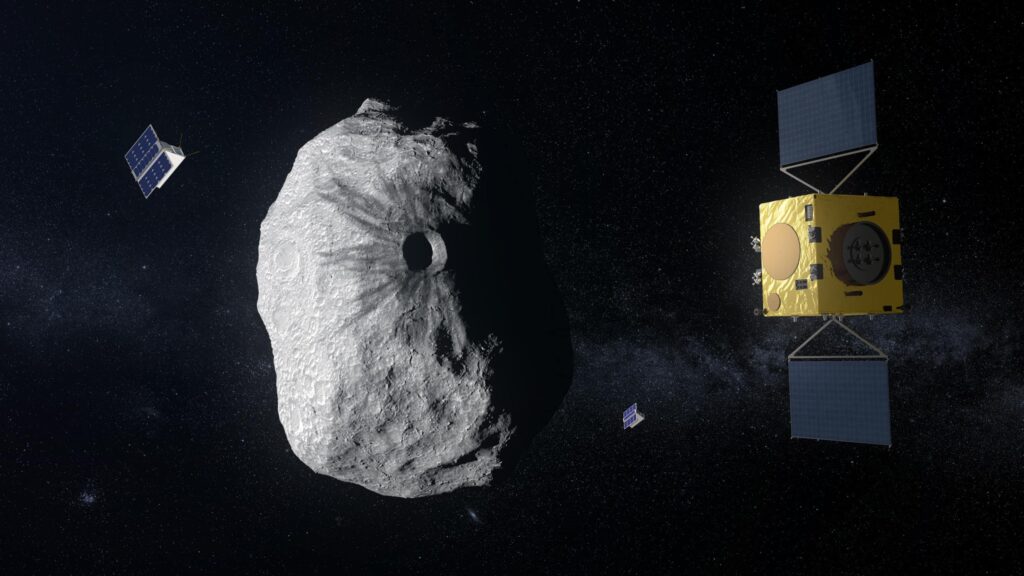
TEKEVER has announced a contract with OHB, the European developer of low-orbit and geostationary satellites, to provide its Inter-Satellite Link (ISL) technology for the ESA Hera mission.
The ESA’s Hera spacecraft will fly to Didymos, a 780-meter-diameter asteroid, in November 2024 to assess the aftermath of the collision between NASA’s DART spacecraft and Dimorphos, a moonlet that orbits Didymos, due to take place on 26 September 2022. Hera is expected to reach the two asteroids in late 2026 and will gather information such as the size of DART’s crater, and the mass and structure of Dimorphos.
TEKEVER’s ISL technology deploys a communications and relative positioning infrastructure, enabling the three satellites involved in the mission to communicate among themselves and take more precise measurements. This combined capability of communications and position determination in one single piece of equipment is unique in the market and will prove an essential component of the Hera mission.

The data collected during this mission will be critical in advancing our understanding of kinetic impact so that it can one day be deployed as a repeatable and well-understood planetary defense technique that can protect the Earth from inbound asteroids in the future.
Ricardo Mendes, CEO of TEKEVER, commented: “We are proud that TEKEVER’s cutting-edge ISL technology has been selected by OHB for use in the Hera spacecraft. With the ISL’s combined communications and position determination capabilities, TEKEVER is uniquely positioned to provide this level of complex technical and operational support. This historic mission will be critical for future planetary defense, and we are honoured to be playing our part.”
Pedro Rodrigues, Space Business Development Director at TEKEVER, added: “TEKEVER continues to push boundaries in space with our advanced ISL technology set to play a central role in the ESA’s upcoming Hera mission. Our unique technology will enable the collection of important data that will inform the development of future planetary defense techniques.”
NASA’s DART Mission
On September 26th, NASA’s DART spacecraft will collide with Dimorphos, a moonlet that orbits asteroid Didymos, in the world’s first test of the “kinetic impactor” planetary defense technique where the trajectory of an asteroid is deflected. The spacecraft will travel at four miles a second and hit the 160-meter-diameter asteroid that orbits its 780-meter-diameter parent Didymos every 12 hours.
TEKEVER specializes in advanced unmanned aerial technology systems for maritime and space industries offering complete, turnkey solutions for nano and micro-satellite missions, and advanced satellite communication and networking systems for multi-satellite missions.
TEKEVER also builds multiple types of drones, capable of flying up to 20 hours continuously while carrying a vast amount of sensors, including cameras, radars or cellphone detectors. The drones are built around an AI-centric platform that combines Edge AI, satellite communications and cloud computing to provide customers with real time information and advanced analytics over simple to use and globally accessible web and mobile interfaces.










